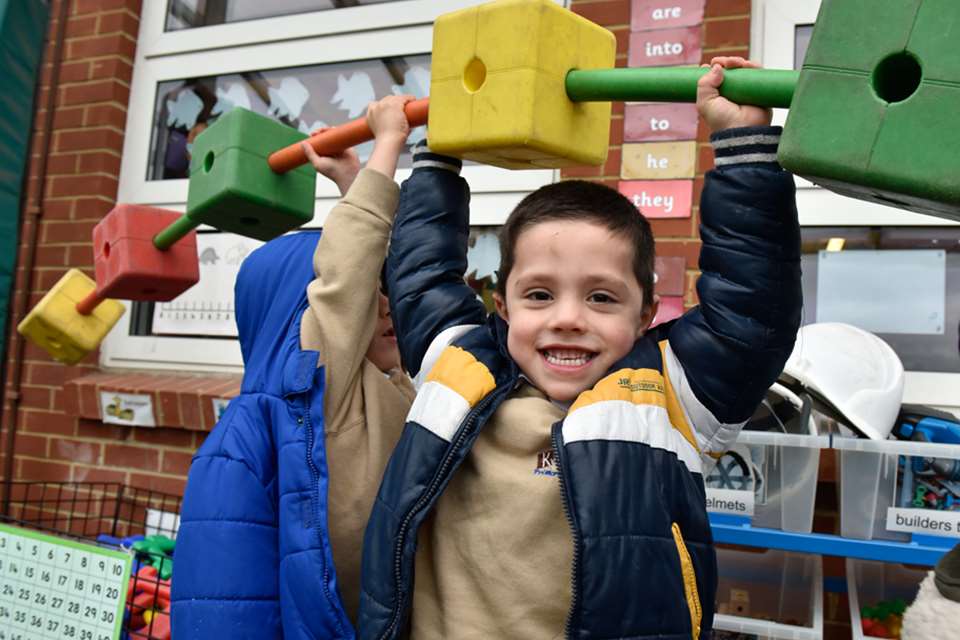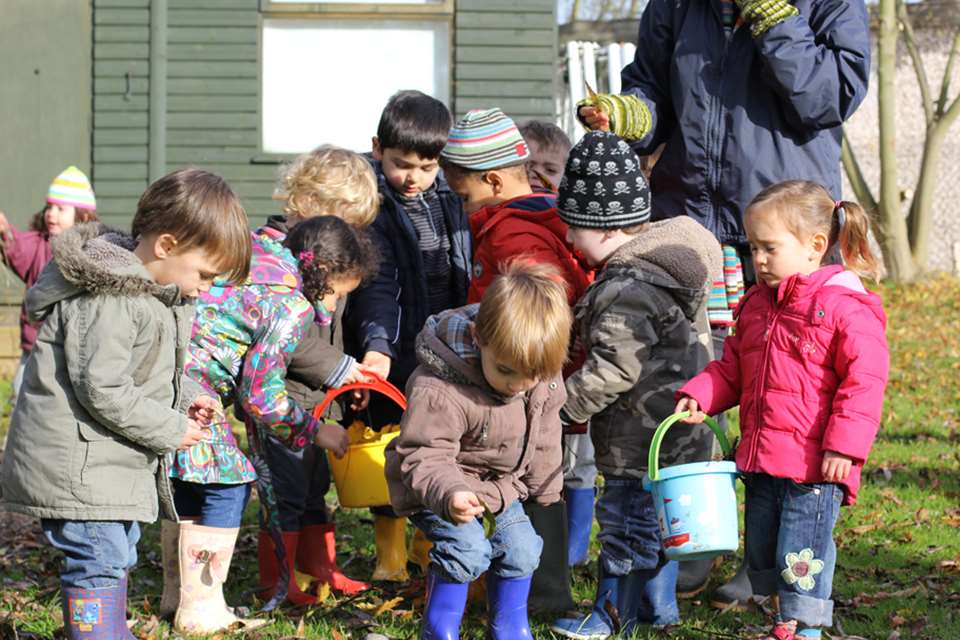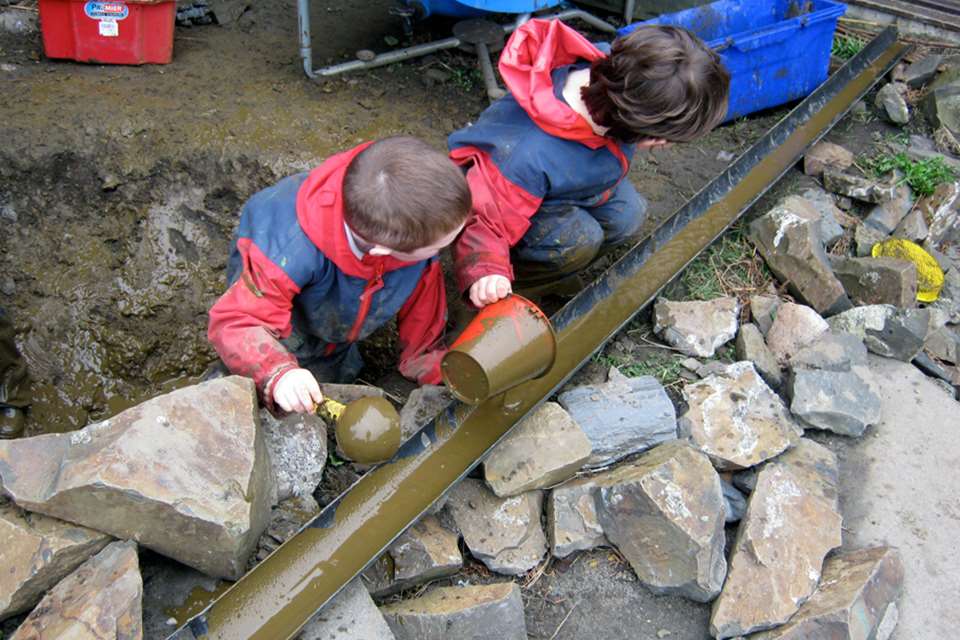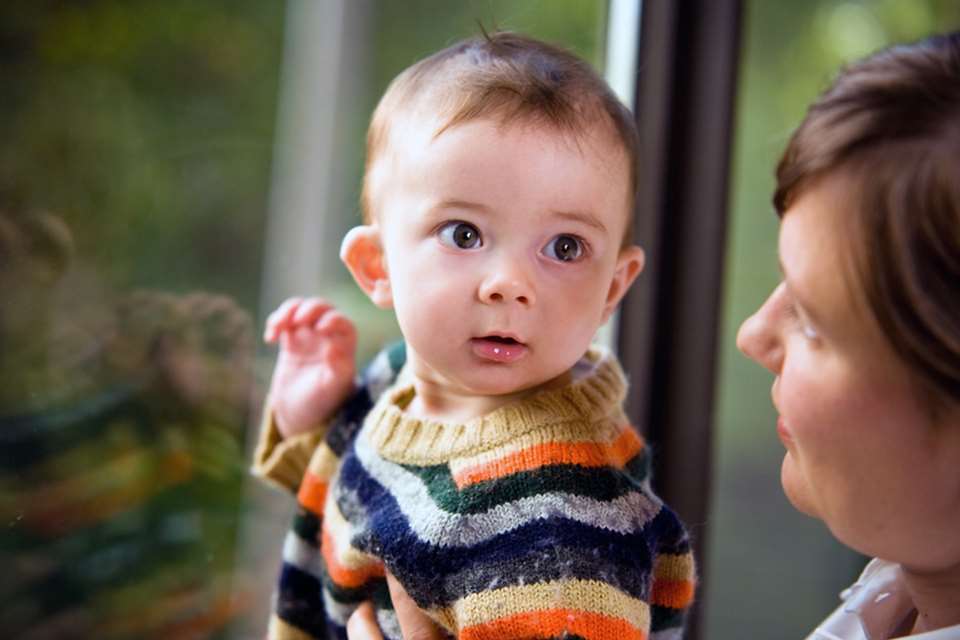Learning & Development: EYFS in Reception - Play time
Helen Moylett
Monday, June 13, 2016
Helen Moylett examines case studies from the Newham Reception Innovation Project on play

The Newham Reception Innovation Project was set up last summer by a group of early years leaders concerned about the extent to which play in Reception was undervalued or misunderstood. Much hard work later, the initiative has brought about significant improvements in practice, with the schools’ data suggesting that most children have made good progress as a result of the project. Although the initiative is officially at an end, the participants are committed to continuing to work collaboratively.
The quality of play-based provision in Reception is a national concern. Last year, Ofsted’s survey Teaching and play in the early years: A balancing act? aimed to ‘address the recurring myth that teaching and play are separate, disconnected endeavours in the early years’. Its definition of teaching within the School Inspection Handbook(2015) then made clear its expectation of seeing a holistic and play-based approach to early years teaching in Reception (see box, below).
The Newham project aimed to maximise pupil progress through this play-based approach by developing effective EYFS leadership skills, and the necessary skills, knowledge and understanding of all Reception staff.
Key questions addressed were:
- What does an EY leader need to know about play and learning?
- How does an EY leader need to monitor and develop their staff?
- How do areas in provision enable children to make progress?
To assess their practice, the schools first audited their support of the Characteristics of Effective Learning (CoEL), using the ‘adult role’ headings in Positive Relationships and Enabling Environments. Each school focused on a particular aspect of practice, while all focused on communication and language, with the adult role also emerging as a dominant theme in:
- engaging in playful interactions with children
- fostering language
- supporting imaginative play
- following children’s playful interests across all areas of learning.
Central to the project was peer learning and regular meetings of EY leaders to share ongoing work. These meetings took place across the schools and were combined with a visit to the early years classes.
The case studies on the following pages illustrate how play and playful interactions provide the natural contexts that children need to develop their learning – and remind us powerfully that ‘Setting up teaching and play as opposites is a false dichotomy’ (Teaching and play in the early years: A balancing act?).
KAIZEN PRIMARY SCHOOL
Kate Fallan, assistant head
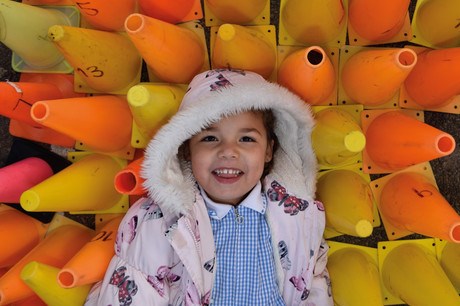
‘Kaizen is an Outstanding two-form entry school with a nursery offering morning and afternoon sessions to three-year-olds.
‘Our CoEL audit highlighted the need for us to look at the role of the adult as play partner and the quality of our observation, assessment and planning. What emerged was an over-reliance by some staff on electronic tracking and monitoring programmes.
- ‘These programmes “fill in the blanks” but are no substitute for teacher reflection and principled professional judgement. They allow practitioners to avoid the sort of interaction that allows children to demonstrate their “efforts, interests and purposes” in learning as set out in the useful definition of “responsible pedagogy” in the Early Years Foundation Stage Profile Handbook, which:
- “enables each child to demonstrate learning in the fullest sense
- depends on the use of assessment information to plan relevant and motivating learning experiences
- can only take place when children have the opportunity to demonstrate their understanding, learning and development in a range of contexts
- [requires] a rich learning environment which provides children with the opportunities and conditions in which to flourish in all aspects of their development
- [provides] balance across the areas of learning
- [has] an ethos which respects each child as an individual and which values children’s efforts, interests and purposes as instrumental to successful learning.”
‘As part of this focus, we have transformed the way we resource and support maths learning. Before the project, maths activities were set up by the class teacher and, while generally nice and neat, they were often unappealing to the children. For example, different-sized blocks and strategically placed Compare Bears might be set out on the maths table-top to encourage children to explore positional language. However, the children rarely approached without the teacher present, and when there, the teacher might have redirected them to use the resources in a particular way – so giving little opportunity for active learning based on intrinsic motivation.
‘After trainee head teacher for early years education Kelly Hall took part in maths CPD, things changed. Staff agreed to replace table-top activities with open-ended resources. Now all maths areas, particularly outdoors, provide open-ended opportunities for enquiry and investigation. The learning potential, rather than the activity itself, leads the provision, as well as the adult role in talking and playing alongside the children.
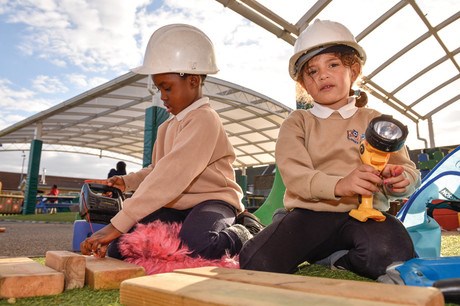
‘Staff have also embraced the idea that maths can happen anywhere. We now have a mud kitchen that naturally encourages children to count, estimate and use mathematical vocabulary related to size, shape and time.
‘Because of the potential of the outdoors for exploring maths through movement and on a larger scale, we are planning more outdoor opportunities. Among our plans is a real car-wash of staff vehicles that will enable the children to problem-solve by making appointments, setting charges and working out what equipment will be needed.’
WOODGRANGE INFANT SCHOOL
Jo Zakiewicz, Reception teacher and EY teaching and learning leader
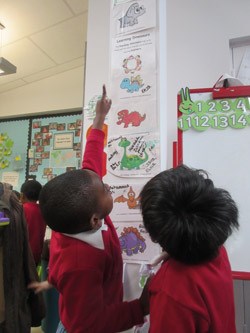 ‘Woodgrange is a four-form entry infant school with a nursery offering morning and afternoon sessions to three-year-olds. The school community is very diverse, both ethnically and socio-economically – 72 per cent of the school speak English as an additional language and there is no dominant ethnic group. This year 25 per cent of the Reception cohort has additional needs, many with speech and language difficulties. Our early years lead is new to the role this year.
‘Woodgrange is a four-form entry infant school with a nursery offering morning and afternoon sessions to three-year-olds. The school community is very diverse, both ethnically and socio-economically – 72 per cent of the school speak English as an additional language and there is no dominant ethnic group. This year 25 per cent of the Reception cohort has additional needs, many with speech and language difficulties. Our early years lead is new to the role this year.
‘The project has enabled us to reflect more on the children’s learning, and make significant improvements in various aspects of provision, among them:
‘Outdoors We started by getting rid of zones for specific areas of learning after realising there is more flexibility and potential for children’s choice and autonomy as learners if we acknowledge that maths and writing, for instance, can take place anywhere. We also decided that we don’t need to have maths and literacy areas outdoors where movement and exploration can be wide-ranging and on a bigger scale. We are currently developing a sensory garden.
‘Planning Our principal challenge has been making the shift to planning around children’s interests, rather than activities. To help with the transition, we encourage each other to question why we are putting out certain resources, such as zoo animals: Which children’s interests are they supporting? What might the children learn through playing with them? What is the adult role in supporting play with these animal figures? This reflective approach represents a big learning curve, especially with new staff. It has also meant that we have had to be sensitive to the fact that we are all on a journey with a variety of backgrounds, qualifications and experience.
‘Modelling We have reflected on what good playful interaction with the children looks like. Some staff have been challenged to think about their own modelling outdoors – realising that if they start running around chasing, or investigating the hedge, children will join in.
‘CoEL We now encourage children to think more about their learning. One way has been through a set of Learning Dinosaurs: Shareonyx, Tryatops, Explorosaur, Askaraptor and Solveosaurus Rex. Adapted from an idea at www.tes.com, these dinosaurs encourage children to adopt the behaviours and dispositions of active, independent learning by, for example, persevering, exploring, asking questions and sharing ideas. The children love them, talk enthusiastically about them at home and have sparked families’ interest in them. As a result, children and families are using more learning vocabulary and staff are conscious of being role models for this type of language. We are going to introduce the dinosaurs to all the other classes, including nursery.
‘Consistency and freedom We have tried to address the need to be consistent in our approach to children’s behaviour, while at the same time allowing them the freedom to learn in their own ways, supported by knowledgeable adults. Basing our planning around certain key stories has helped with this. In this term’s exploration of Julia Donaldson’s The Gruffalo and Stickman, we have been to the woods in role, acted out the stories, made our own versions and had some rich conversations including the children speculating about what may be in the woods.
‘Staff development We are investigating ways of freeing up more time to reflect on the children’s learning. At the moment, we have only 15 minutes on a Friday now that we have abandoned our weekly ‘singing assembly’, when one staff member had all the children while the rest attended a team meeting. This met the staff’s need for time, but not the children’s need for quality learning experiences.’
GAINSBOROUGH PRIMARY SCHOOL
Emma Webb, Reception teacher and EY leader
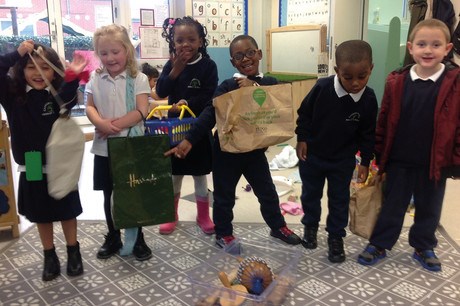 ‘Gainsborough is a two-form entry school in an area of high mobility, with many families new to the UK and in cramped temporary accommodation. Of the school’s roll of 406 children, 56 are in Reception. There is also a nursery offering morning and afternoon sessions. The school employs a speech and language therapist two days per week and has a full-time speech and language TA to address the high levels of language delay among the children.
‘Gainsborough is a two-form entry school in an area of high mobility, with many families new to the UK and in cramped temporary accommodation. Of the school’s roll of 406 children, 56 are in Reception. There is also a nursery offering morning and afternoon sessions. The school employs a speech and language therapist two days per week and has a full-time speech and language TA to address the high levels of language delay among the children.
‘I am in my second year of leading the school’s EY provision, so I had much to learn about how our team could support children’s learning through play. My focus during the project has been how we can provide rich language experiences through appropriate playful pedagogy.
‘Overall, the project has made us more aware of the links between the CoEL, critical thinking and language development, as well as the adult’s responsibility to reflect on these links in practice.
‘Enabling environments Before the project, our class environment was very busy, with lots of furniture and displays. The adults set up the resources, leaving little opportunity for children to self-select. We invested in Community Playthings furniture to create a flexible space in which children can choose resources independently. The atmosphere is now calm and purposeful, play is central to our provision and the environment is conducive to engaging in meaningful conversations. We have focused on imaginative play, particularly the use of books and stories to develop play themes and language. We now find that role-play areas are used more frequently and for longer.
‘Interactions The greatest challenge for us has been to move away from bombarding children with questions to becoming play partners and engaging in conversation with them. Challenging too has been recognising what a “good” learning conversation sounds like, knowing that it may include questions but remembering too that they are not the driving force of the interaction. I have had success in playing alongside children and waiting for them to start the conversation, though it is very hard not to try to fill the silence. This is of particular benefit to children who are less willing to talk. The strategy that I use the most is to give myself time to think about what I am going to say, instead of giving children the answers they need straight away. This helps children work through their own thinking to reach their own conclusions. Encouraging people to wait and rephrase what they are going to say before they say it has helped us to develop our skills in identifying the points at which we can move on children’s language.
‘Superhero play One topic that came up for discussion was gun play. We decided it would be wrong to ban this – if it is done as part of imaginative play and is not aggressive or hurting anyone, then it is an acceptable part of the experiences that children want to share with each other. However, we do now suggest the likes of “freeze rays” to develop the imaginative aspect of what a gun might be. I have also found that the boys want to stick to certain patterns and scripts. So, to challenge gender roles, I have explained we can all make up different games.’
EARLHAM PRIMARY SCHOOL
Natalie Robinson, deputy head teacher
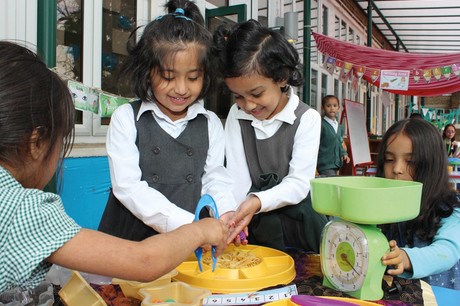 ‘Earlham is a community primary school, located in the most deprived area of Forest Gate, London. The vast majority of its 410 learners are from ethnic minority families, where English is not the first language and many parents’ literacy levels are low. Bangladeshi is the largest group.
‘Earlham is a community primary school, located in the most deprived area of Forest Gate, London. The vast majority of its 410 learners are from ethnic minority families, where English is not the first language and many parents’ literacy levels are low. Bangladeshi is the largest group.
‘Our focus within the project was communication and language within an ethos of free play and choice. This proved a challenge as we started the academic year with our new building unfinished. However, designing our rooms from scratch gave us the chance to create enabling environments that reflected our wider aims. So, for example, units with child-height shelves and drawers run along the main wall so that children can self-select resources.
‘The outdoors is easily accessible from inside and has a role-play area that links to the current Reception class theme of fairytales.
‘To improve the C&L outcomes for children, we have made various changes, including:
‘Interactions We turned to research about not bombarding children with questions when playing alongside them in role play. Now interactions are more conversational and we avoid always rushing in to engage with the children. This approach has proved particularly helpful for one colleague who moved to Reception from KS2. Now, conversation no longer goes all through him, so children are beginning to talk more to each other, even when he is part of the group, and he is also learning more about them and their progress in language. He says, “When I was speaking and directing all the time, the role-play didn’t flow properly. When I sit back they get on with creating role play.”
‘Modelling While we wanted to reduce our “interference” in children’s play, we did not want our modelling of new vocabulary to diminish. So we introduced Word of the Week where new vocabulary is introduced, modelled and then used throughout the learning.
‘Prompts We have created lists of “conversation starters” to replace our old “questions to use”. These worked well in the role-play area and have since been rolled out in other learning areas, including sand and construction.
‘Display We introduced a “conversation station” displaying a changing collection of natural materials and more diverse objects to inspire imagination and spark conversation.
‘After discussions with other Reception leaders, we introduced more open-ended opportunities for maths learning, which has also generated a lot of talk between the children.
‘A particularly valuable part of the project was when two of our teaching assistants – one very experienced, the other in her first year – shadowed TAs in another school. Both welcomed the chance to pick up new ideas and reflect on their own approach. After one visit, we introduced the Learning Dinosaurs [see Woodgrange case study].’
NORTH BECKTON PRIMARY SCHOOL
Jo Porritt, EY leader
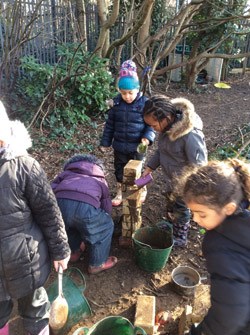 ‘North Beckton has some 590 children on its roll, including three Reception classes and two nursery classes.
‘North Beckton has some 590 children on its roll, including three Reception classes and two nursery classes.
‘As a fairly new early years leader, the project has enabled me to learn from more experienced practitioners and reflect on my leadership. Especially helpful have been the school visits to share ideas and good practice. For example, thanks to my visit to Kaizen, I have a greater understanding of how to plan more in the moment and give children opportunities to be critical thinkers and to review and reflect on their own learning. Overall, the project has enabled us to become more of a team, with TAs now more involved in curriculum planning.
‘We were keen to get involved in the project because we felt our practice was becoming too formal and structured, with the result that children were not challenging themselves and becoming independent learners. They were doing what they were asked and not following their own interests.
‘Before, I spent most of my time at tables doing focused activities, and very little time talking and playing with the children. Now we are much freer. The EY team know what the learning objectives are, recognise that learning can take place anywhere and no longer restrict elements of the curriculum to one activity or area of provision.
‘Recently, for example, some children dug for treasure in our forest school area, went on to make treasure chests and drew in children from other classes to their interest. Previously, learning would not have strayed from the teacher’s plan.
‘There is also now a greater flow of learning between the indoors and out, so the story of the Three Little Pigs began inside but progressed to the children building their houses with real bricks, straw and twigs outdoors.
‘The freedom for children to explore, learn and become critical thinkers is most evident in our small forest school area. We take all the necessary safety precautions but encourage the children to take risks, such as climbing trees.
‘The children love using the digging area, the mud kitchen, climbing the trees and the ladder to the treehouse, digging for worms, finding minibeasts and exploring the paths through the bushes. Sometimes the adults provide an activity, but nobody has to do it and children have free access to the resources cupboard with spades, buckets, magnifying glasses and the like.
‘They are engaged and concentrating and rarely does an adult have to prompt them to become involved.
‘We see the CoEL in action everywhere and want to replicate these same levels of engagement indoors, with children taking their learning where they want.’
OFSTED DEFINITION: EARLY YEARS TEACHING
‘Teaching in the early years should not be taken to imply a “top down” or formal way of working. It is a broad term that covers the many different ways in which adults help young children learn. It includes their interactions with children during planned and child-initiated play and activities: communicating and modelling language, showing, explaining, demonstrating, exploring ideas, encouraging, questioning, recalling, providing a narrative for what they are doing, facilitating and setting challenges.
‘It takes account of the equipment adults provide and the attention given to the physical environment, as well as the structure and routines of the day that establish expectations. Integral to teaching is how practitioners assess what children know, understand and can do, as well as taking account of their interests and dispositions to learn (characteristics of effective learning), and how practitioners use this information to plan children’s next steps in learning and monitor their progress.’ School Inspection Handbook, Ofsted
NW CONFERENCE: SELF-REGULATION
Helen Moylett will be one of the speakers at our conference ‘Self-regulation: the key to effective early learning’ in London on 30 June.
Our keynote speaker is Clancy Blair, professor of cognitive psychology at New York University. A leading authority on self-regulation, he will look at the neuroscience behind self-regulation, its links to lifelong learning and ‘closing the gap’, and the implications for early years curricula.
Consultants Ms Moylett and Nancy Stewart will be looking at the links between self-regulation and the EYFS, in particular the Characteristics of Effective Learning, and will draw on the results of the Newham project.
Practical workshops will include maths with Linda Pound; behaviour with Anne O’Connor; outdoors with Redcliffe Nursery School; working with parents with Everton Nursery School; and role-play and music with self-regulation expert Dr Antonia Zachariou from the University of Roehampton.
To book a place, visit: www.selfregulation.co.uk/home
MORE INFORMATION
For Helen Moylett’s earlier article on the project and its links to self-regulation, see:http://bit.ly/1rcP0R3
Helen Moylett is an independent early years consultant and was a critical friend to the scheme


